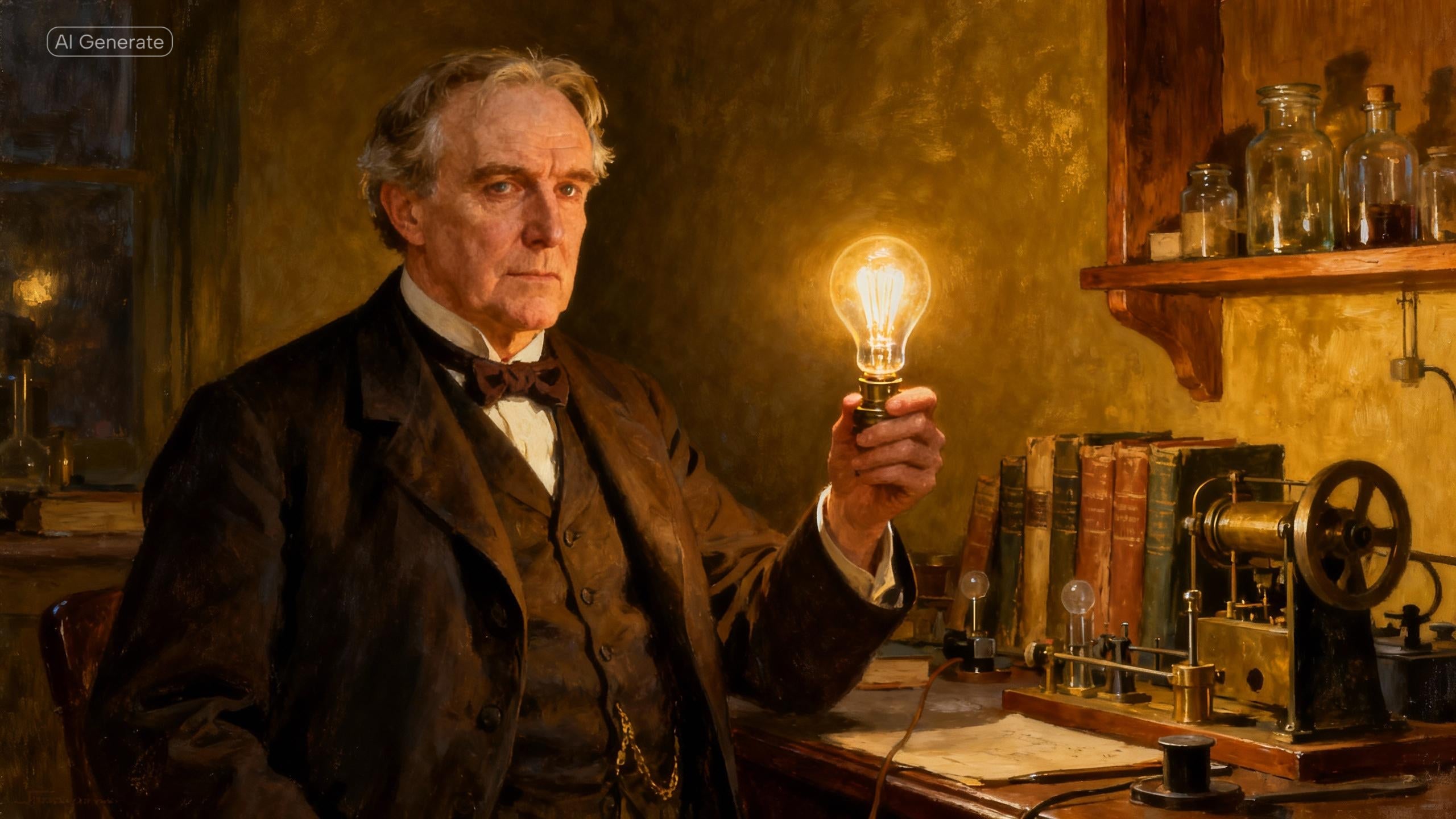If Thomas Edison Were Born in the Age of COVID
If Thomas Edison is alive today, what kind of light would he invent for our modern world — one shaped by pandemics, rising health awareness, and technological leaps?
When Edison created the first practical florescent bulb in the 1880s, his mission was simple yet revolutionary: to banish darkness safely. Before that, homes were lit by candles and kerosene lamps — dim, smoky, and dangerously flammable. His light didn’t just brighten homes; it changed human life forever.
Now, 144 years later, humanity faces a new kind of darkness — not the absence of light, but the presence of invisible threats like germs, bacteria, mould, and viruses that quietly surround us every day.
How We Fall Sick — The Invisible Journey of Germs
Illness doesn’t just “happen.” It starts with exposure.
-
Contact – You touch a surface or breathe air that contains harmful microbes.
-
Transfer – The germs enter your body through your mouth, nose, or open skin.
-
Invasion – They multiply, breaking through your immune defences.
-
Reaction – Your body triggers inflammation, fever, or fatigue as it fights back.
Germs are everywhere from door handles to smartphones. Some are harmless or even beneficial, but others can trigger colds, infections, and serious diseases.
Good Germs vs. Bad Germs
Not all microorganisms are your enemies.
Good Germs – Found in your gut and on your skin, they help digest food, fight bad bacteria, and strengthen immunity.
Bad Germs – Pathogens like E. coli, Salmonella, and Influenza viruses that can cause infection and illness.
The goal isn’t to live in a completely sterile world — it’s to REDUCE harmful germs that cause sickness while keeping the good ones in balance.
The Purpose of Staying Healthy
Good health isn’t just about avoiding disease; To most, it's about longevity.
When we stay healthy, we:
-
Spend less on medical bills
-
Enjoy higher focus and creativity
-
Live longer and happier with family
In an age where work, pollution, and global travel constantly expose us to pathogens, maintaining health has become both a personal responsibility and a technological challenge.
The Next Evolution of Light: Non-UV Sterilising LED Technology
Imagine if the same light that brightens your room could also quietly destroy germs in the background — without UV, without chemicals, and without risk.
That’s exactly what a Non-UV Sterilising LED light can do!
Engineered within the visible light spectrum (400–700nm), these patented LEDs emit a gentle wavelength that:
-
Eliminates over 90% of germs, mould, and viruses
-
Reduces fungi and pest attraction (e.g. flies, cockroaches, lizards, even mosquitoes)
-
Is safe for humans, plants, and pets
-
Operates 24/7 to protect entire spaces (air and surface) without emitting any heat
Certified by multiple renowned laboratories around the world, these lights redefine what "healthy lighting" means.
It’s no longer just about brightness — it’s about purity, hygiene, and peace of mind.
Edison’s Legacy Reimagined
If we could ask Thomas Edison today: “What light would you invent in this era?”
He’d probably build one that doesn’t just light up our homes, but also protects them.
Just like he once solved the problem of darkness, innovators today are solving the problem of invisible threats.
From candles to fluorescent bulbs, from LEDs to germ-killing non-UV light, every era brings a new invention that matches humanity’s most pressing need.
A Light for the Future
The world has evolved.
We want cleaner air, germ-free surfaces, and healthier living — and we want technology that works quietly in the background (just like an air-purifier)
With Non-UV sterilising LED lights, every room can become a protected space.
It’s not just about illumination anymore — it’s about illumination with purpose.
Light has finally evolved from something we see to something that safeguards.

